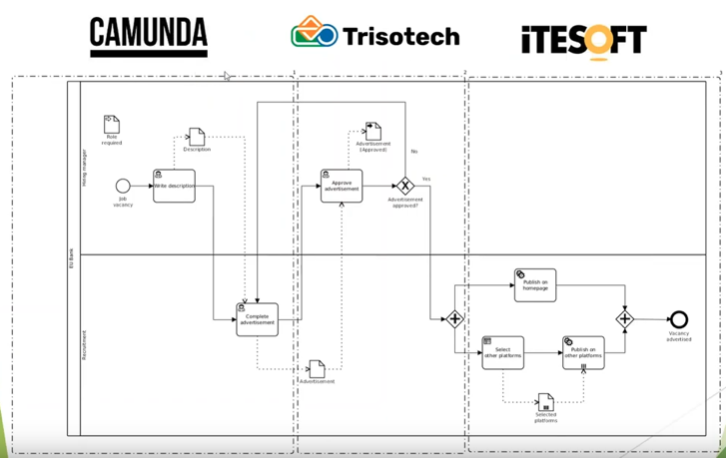This month 10 years ago, BPMN 2.0 was finalized and adopted as a standard, which in itself is something Camunda is happy to celebrate.But what has happened in the BPM space in the meantime is probably the most interesting thing about BPMN 2.0. A whole ecosystem and community has grown from the standard. While it originally came into existence to give the process building community a unified language, it sparked a lot of independent innovation.
This was because turning a visual process language into an executable framework brought in a lot of new ways of thinking about processes, so modelers, engines and reporting tools began springing up – all around the same standard. So 10 years on we’ve arrived at a point where the standard, the tooling and the community is a stable and mature source for new ideas in processes and automation.

Earlier this month a demonstration I was part of by members of MIWG (Model Interchange Working Group) showed the BPMN community’s adherence to the standard, but also doubled as a snapshot of the capabilities of today’s tooling around this open standard. It also – for me – validated that this standard is still producing new and innovative ways to build really great software from a common framework. The idea of the demo was to get together a group of vendors who have each built their tools with BPMN and prove one of the fundamental truths of BPMN. That:
If I model a process in one BPMN 2.0 compliant tool I should be able to load that model in any other tool claiming to also be compliant.
How is this proven? Well we model a process – LIVE – and then the following tool uploads the model made by the previous and adds to it. In the end we have a process modeled to completion which has passed through completely different BPMN models.
The demo itself was done in two parts. Process Modeling and Process Execution. The interchange was the most important goal of the modeling section, while the process execution focused on what you can achieve when executing BPMN using today’s BPMN process engines.

For the modeling portion of the demo I showed our web modeler Cawemo in action. Under the hood Cawemo uses bpmn.io and it’s really cool to see how much you can build and extend that library.

I then exported the model to the fabled BPMN 2.0 XML and passed it along to Simon from Trisotech so that he could upload it and continue the fun.

When all vendors had gotten their opportunity to prove the interchange works we moved onto what is my personal favorite part of the demo – execution! Not all of the vendors offer both a modeler and an execution engine but those who did (Camunda included) were given about 2 minutes to show the benefits of an executable notation to varying degrees. A lot of vendors were demonstrating how exactly to add execution semantics, but I decided it might be more interesting to show how a running executable process in Camunda can be easily updated and instances migrated. I also picked this feature to demo because I really love it and the team has done an amazing job of making it look great. The only downside is that it took a lot less than 2 minutes so I thought I’d throw in a few other features such as:
- Cawemo’s Diffing feature
- Cockpit’s Heatmap
- Task management with Tasklist

We ended the session with a lovely long Q & A section in which I did my best to answer the Camunda questions that came my way.
I’m already looking forward to next year’s demo and delighted that Camunda participates in events like these. I hope it gives people the same excitement as it does for me when seeing what a number of vendors can create independently, while still staying connected by the common language of BPMN 2.0.
If you’re interested in how Camunda is involved with the BPMN 2.0 standard, and what the future has in store for BPPM, join our August 26th webinar: Happy Birthday BPMN! 10 Years of BPMN 2.0: The Impact and What’s Next.
Plus if you want to see the full demo from the OMG, you can watch the recording. And please feel free to reach out to us with any questions you might have here.
